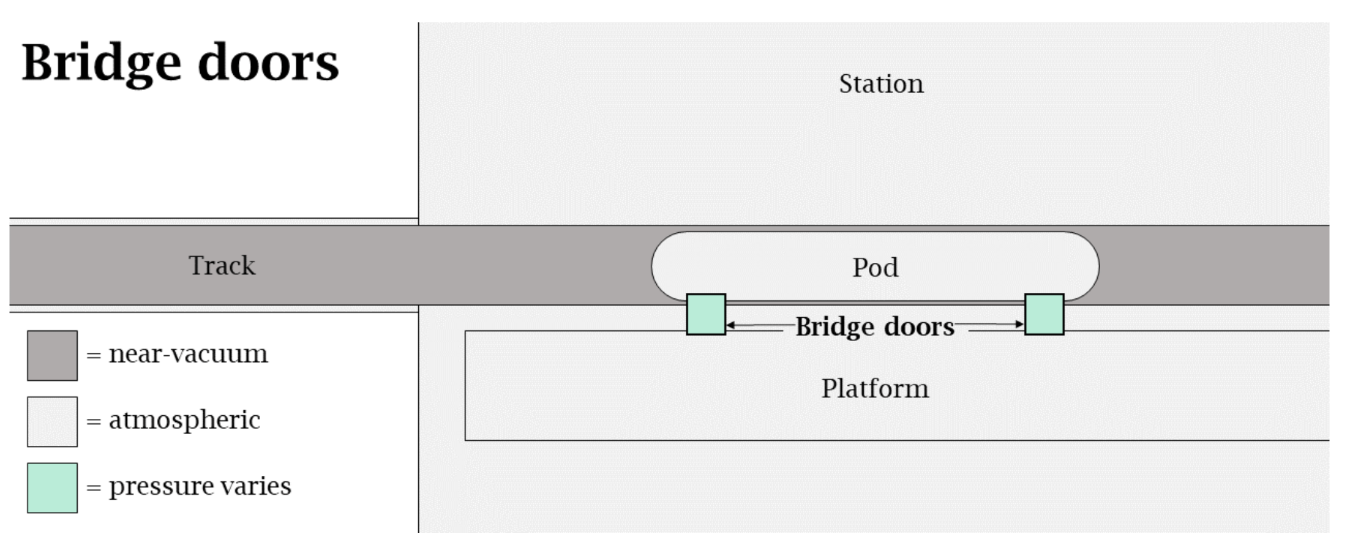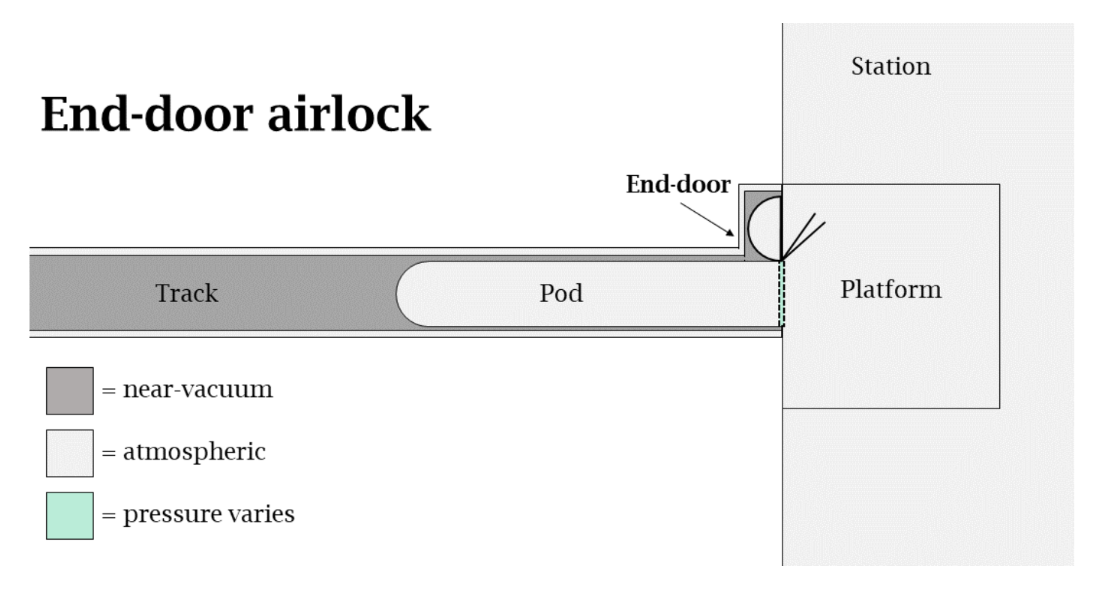A comparison of vacuum interface options.
This article gives a brief summary of the report on the airlocks at hyperloop stations written by Delft Hyperloop. For the full report, click the button below!
The hyperloop pod travels in a near-vacuum environment. A system should be developed to allow the passengers of the hyperloop system to embark and disembark safely without experiencing the pressure difference. This interface between the low-pressure and atmospheric pressure environments should be designed for safe, efficient, and sustainable operability. This report presents and compares three options.
Bridge doors
The first option is a side bridge door linking the station environment to the pod using a bridge that can be pressurized and depressurized. The bridge connects to the pod and creates an airtight connection using hooks and seals. When the bridge is pressurized to atmospheric pressure, the pod’s doors and the bridge doors open allowing the passengers to enter or exit.

Figure 1: Simplified top-view of the bridge doors at the station.
Airlock chamber
The second option is an airlock chamber in which the pod can transition from the tube’s vacuum environment to the station at atmospheric pressure. Airtight doors on both sides of the airlock chamber and vacuum pumps enable the pressure in the chamber to change from near vacuum to atmospheric and back, allowing the pod to transition between the two environments.

Figure 2: Simplified top-view of the airlock chamber at the station.
End-door airlock
Finally, the third option is an end-door airlock which links the station environment to the interior of the pod at the end of the near-vacuum tube. Double airtight doors allow one end of the pod to directly connect the interior of the pod to the atmospheric station environment. The third option presents major complexities, which is why Delft Hyperloop does not consider the end-door airlock feasible for passenger transport.

Figure 3: Simplified top-view of the end-door airlock chamber at the station.



0 Comments